Overview
In order to access information from an MES or other external system, Tulip uses Connectors
Once the Connector Functions have been built, they can be initiated within an app via Triggers.
This means that when an operator presses a specific button within the Tulip Player, or uses a specific connected device like a barcode scanner, you can retrieve or store data in an external system.
Here's how the data will travel through Tulip to your system of choice:
- Specify the Connector Function that should run within the Trigger
- Specify the inputs for the connector function (if any are needed). These are usually Variables from an app
- If there are outputs from the connector function, specify which Variable should store theses values.
Here's a visual of the pathway:
Variable (or static value) in app --> Inputs to Connector Function --> Connector function runs --> Outputs --> Other Variable in app
This can be achieved by following the steps described below:
Create The Trigger
1- Click on the "+" sign beside Triggers under the Step Tab of the Side Pane.
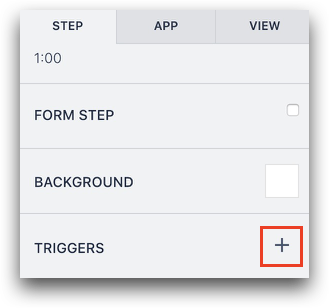
2- Fill in a name for the new Trigger in the Trigger Editor.
3- Select When the trigger should run.
Add the "Run Connector Function" Trigger Action
4- Select a Condition that will determine if the Trigger should run in the If section.
5- Add New Action by filling the section under “Then”:
- Select "Run Connector Function"
- Select the connector you wish to run
- Select the desired data input to the function (e.g a barcode scan, from a variable or even a static value)
- Select the Variable where you would like to store the outputs of the function (the variable will be an array or object depending on the connector function)
Here's an example:
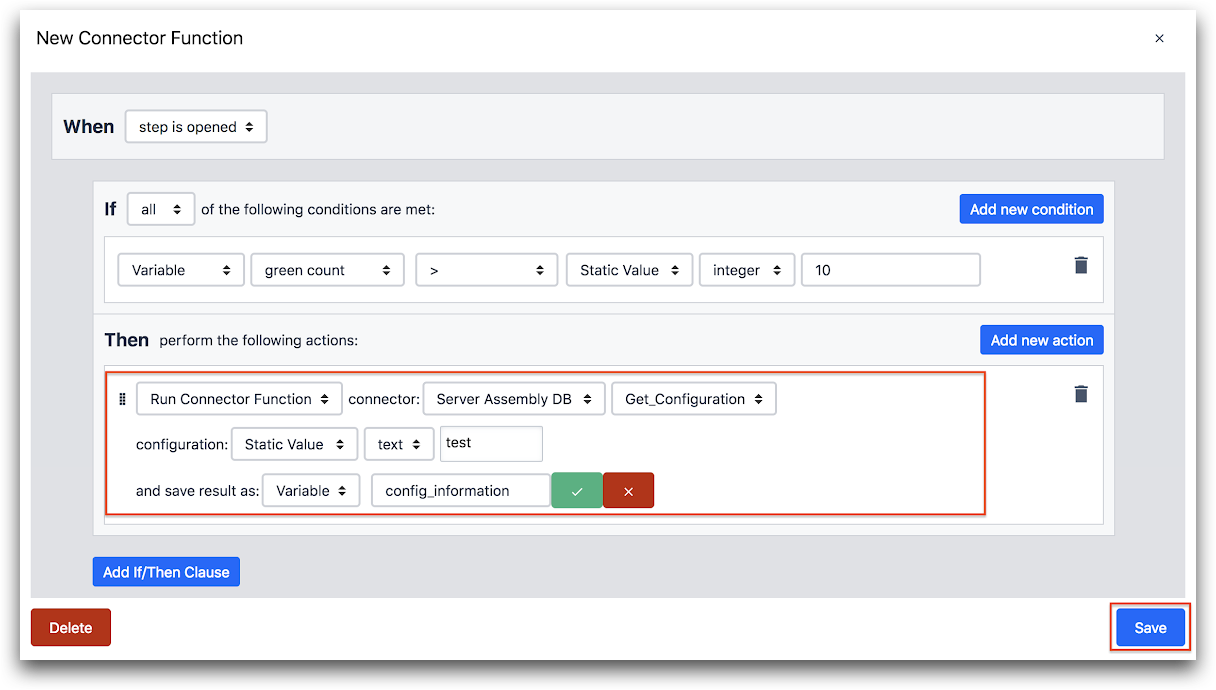
- "Run Connector Function" connector: "Server Assembly DB" "Get_Configuration"
- configuration: "Static Value" "text"
- and save result as: "Variable" "config_information"
NOTE
In case the data received from the connector function contains several variables, Tulip will save each data input as a separate property within an object and you’ll be able to access each property separately.
Further Reading
Did you find what you were looking for?
You can also head to community.tulip.co to post your question or see if others have faced a similar question!
Connectors
Connectors enable real-time connectivity between your Tulip solution and a transactional system (e.g. an ERP). The output of a Connector Function can be used in Tulip Apps, Automations, and Functions.
HTTP Connectors utilize HTTP API endpoints.
SQL Connectors can enable connectivity with certain SQL databases.
MQTT Connectors can connect to MQTT brokers for machine monitoring.
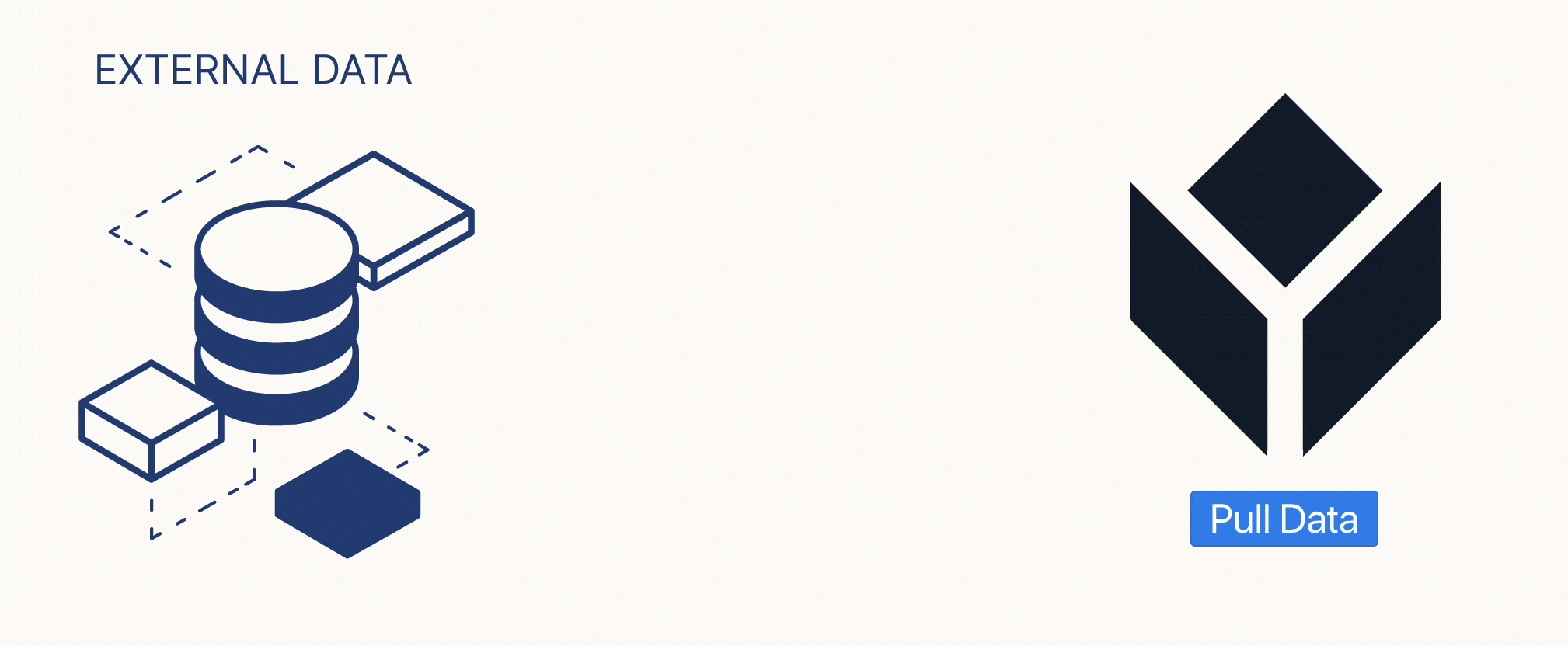
Connector Function
Connector Functions are individual operations to interact with an HTTP or SQL Datasources. Functions can have inputs and outputs, and can be called from Triggers.
Once pulled, data can be used throughout your applications.
.gif)
Trigger
Triggers are groups of logic that are tied to an app event, such as step open, timer, widget interaction, etc. App builders can add triggers to widgets, machines, devices, apps, and steps.
Triggers can contain actions, transitions, and conditions.
Tulip Player
Tulip Player is the Windows/Mac executable program where users can run Tulip apps. Tulip player allows you to create a more seamless user experience by removing the need for a web browser and allows increased IT controls.
Variables
Variables are a location to store app information. Variables have a specific type that must match the contents they can store.
Variables are only accessible within a single application and are cleared when the app is restarted or completed.
Variable
Variables are a location to store app information. Variables have a specific type that must match the contents they can store.
Variables are only accessible within a single application and are cleared when the app is restarted or completed.
Trigger
Triggers are groups of logic that are tied to an app event, such as step open, timer, widget interaction, etc. App builders can add triggers to widgets, machines, devices, apps, and steps.
Triggers can contain actions, transitions, and conditions.
Step Tab
In the Side Pane, the Step Tab is where you can adjust all of the Step-level settings, including Step Triggers, Step background, Step resolution, and more.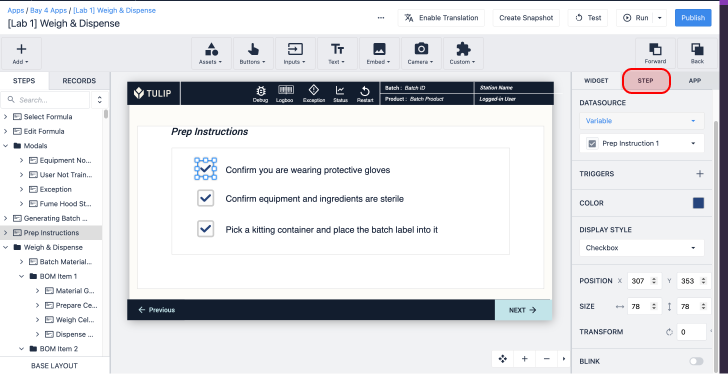
Side Pane (Context Pane)
The Side Pane is the configuration pane on the right side of the App Editor where steps, apps, and widgets can be configured. Triggers can be added to adjust widget behavior.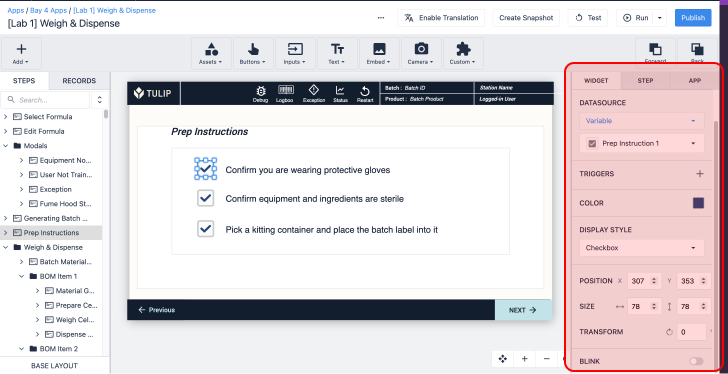
Action
Actions are different operations that can be executed in Triggers. Actions cannot move users to other apps, or other steps.
Many Actions can be added to a single Trigger.
ex. Store the value of variable x to table field y, Print app step, Adjust Edge device GPIO pin.





.gif)

